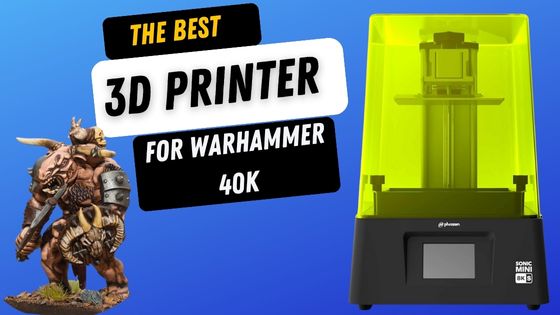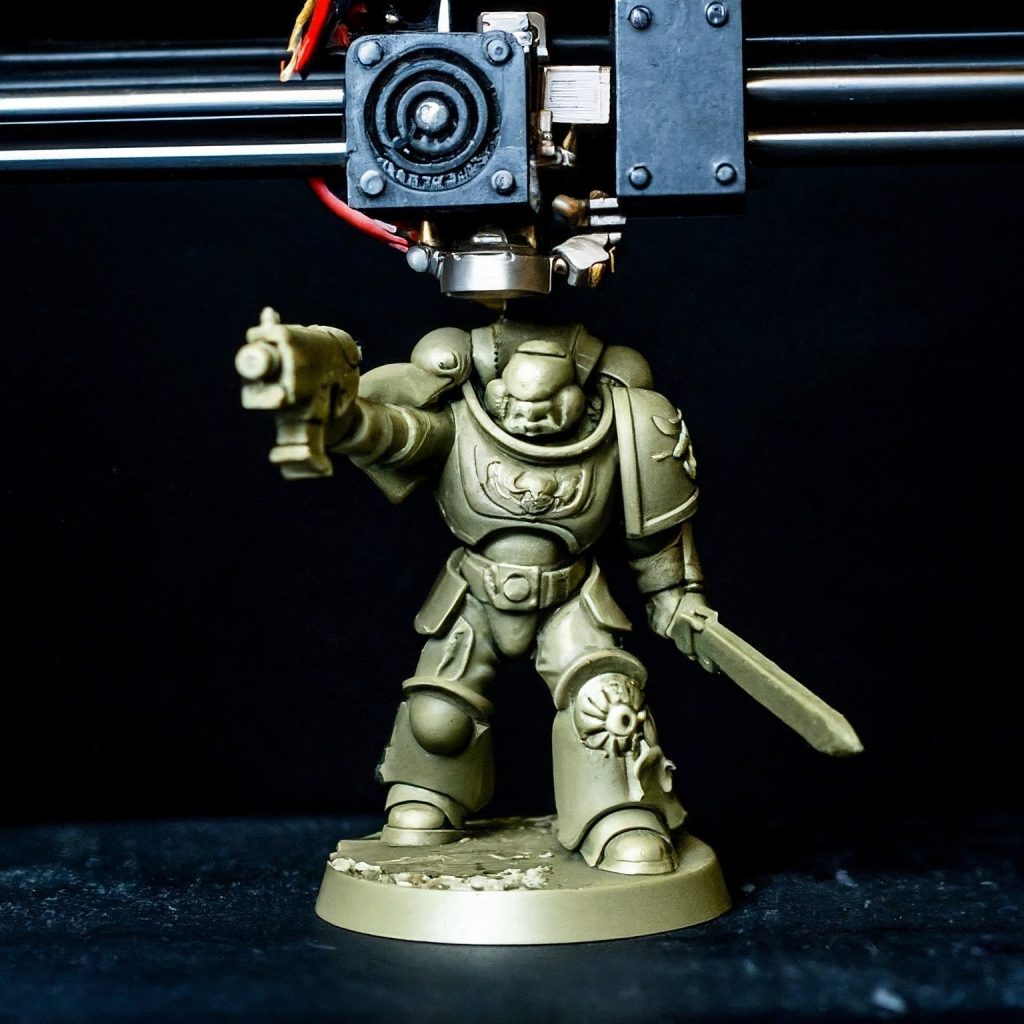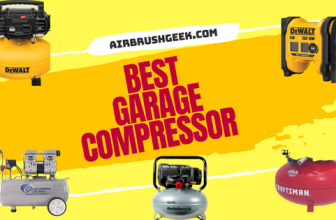Best 3D Printer for Warhammer 40K

Hey there, fellow Warhammer 40k fans! Are you ready to take your miniature gaming experience to the next level? Look no further, because I’ve got just what you need. In this post, I’ll be sharing the list of the best 3D printers for Warhammer 40k that will revolutionize your Warhammer 40k hobby. Get ready to unleash your creativity and bring your favorite characters and battlefield scenes to life like never before. Let’s dive in and find the best 3D printer for Warhammer 40k for you!
ELEGOO Resin 3D Printer, Mars 3 Pro
Precision and Efficiency in Resin Printing
he ELEGOO Resin 3D Printer, Mars 3 Pro, impresses with its exceptional print quality, fast printing speed, and user-friendly design. While the limited build volume and resin odor are considerations, the printer’s robust construction and advanced features make it a standout choice in the resin 3D printing market. Overall, the Mars 3 Pro delivers a reliable and efficient printing experience for both beginners and seasoned users,making it an excellent choice for creating the best 3D prints for Warhammer 40K.
Phrozen Sonic Mini 8K
The Phrozen Sonic Mini 8K S impresses with its unmatched print resolution and efficient operation. While considerations such as limited build volume and resin handling precautions exist, the printer’s advanced features, including the 8K monochrome LCD screen, make it a top-tier choice for users seeking exceptional precision in resin 3D printing. Overall, the Sonic Mini 8K S stands out as a reliable and high-performance option in the competitive landscape of resin 3D printers, ideal for crafting detailed Warhammer 40K miniatures.
ANYCUBIC Photon Mono M5s 12K
The ANYCUBIC Photon Mono M5s is a reliable choice for users seeking a balance between precision, efficiency, and user-friendly operation in resin 3D printing. With a focus on high-resolution prints and a thoughtful air purification system, it addresses common concerns associated with resin printing. Despite considerations such as limited build volume, the Mono M5s stands out as a solid performer, providing a streamlined and satisfying 3D printing experience.
ELEGOO Mars 4 Ultra
This ABYSTYLE Warhammer 40K Bolter Rifle 3D Metal Keychain is the perfect accessory for any Warhammer 40k fan. The chunky bolt gun charm looks awesome and will let everyone know that you mean business when it comes to protecting your keys. While the chain may not be the sturdiest, the charm itself is pretty dope and can easily be paired with a stronger chain if needed. Just be prepared for the shipping time and note that the eagle design is only on one side.
ELEGOO Saturn 3
The ELEGOO Saturn 3 3D Printer for Warhammer 40emerges as a formidable companion for hobbyists seeking top-tier print quality and reliability. With a focus on catering to Warhammer enthusiasts, its 4K monochrome LCD screen, large build volume, and efficient curing process make it a standout choice. While its size may pose a challenge for smaller workspaces and there might be a learning curve for beginners, the Saturn 3 earns its place on the battlefield of precision printing, delivering Warhammer enthusiasts the tools they need to bring their miniature armies to life with unparalleled detail.
ANYCUBIC Photon Mono X
The ANYCUBIC Photon Mono X shines as a powerful tool for enthusiasts seeking precision and efficiency in their 3D printing endeavors. With its 4K monochrome LCD screen, spacious build volume, and stable construction, it caters to a diverse range of projects. While considerations like resin handling precautions and connectivity options exist, the Mono X stands as a reliable and high-performance choice, illuminating the path to detailed and efficient resin 3D printing.
Explore Other Options

How does a resin printer work?
Resin 3D printers, also known as stereolithography (SLA) or masked stereolithography (MSLA) printers, use a process called photopolymerization to create objects layer by layer. Here’s an overview of how a typical resin 3D printer works:
- Preparation:
- Create or download a 3D model: Use computer-aided design (CAD) software to design a 3D model or download pre-made models from online repositories like cult3d or myminifactory or from a good patreon like Titan Forge Miniatures. A good place to go to is the Mini Index, a crowd-sourced index of 3d printable files for minis, terrain tiles etc…
- Slice the model: Use slicing software like the popular chitubox to divide the 3D model into thin layers. This software generates the instructions (G-code) that the printer will follow.
- Printing Process:
- Resin Tank: The resin 3D printer has a tank filled with liquid photopolymer resin. This resin is photosensitive, meaning it reacts to light.
- Build Plate: A platform or build plate is positioned above the resin tank. The build plate is initially submerged in the resin.
- Layer-by-Layer Exposure: The printer exposes the resin to light (usually UV light) in the pattern of the first layer of the sliced 3D model. This exposure solidifies the resin selectively, forming the first layer of the object on the build plate.
- Z-Axis Movement: After the first layer is solidified, the build plate moves slightly upward, creating space for the next layer of resin.
- Repetition: The process repeats, with each layer being exposed and solidified one at a time. The build plate continues to move upward, and the cured layers stack to form the final 3D object.
- Curing and Finalization:
- Once the entire object is printed layer by layer and has reached the desired height, the build plate is raised to the top.
- The printed object is then carefully removed from the build plate. It may require additional curing, either through exposure to UV light or other post-processing methods, to fully harden the resin.
- Post-Processing:
- Remove supports: Some models may have temporary supports added during printing to assist with overhangs. These are removed after printing.
- Clean the object: Rinse the printed object in a solvent (usually isopropyl alcohol) to remove any uncured resin.
- Final curing: Fully cure the printed object, often by exposing it to additional UV light. This ensures the object achieves its maximum strength and stability.
Resin 3D printing is known for its ability to produce highly detailed and accurate prints, making it a popular choice for applications like jewelry, dental models, and miniatures.
Your Guide to Finding the Perfect 3D Printer for Warhammer 40k
- Print Quality: When it comes to creating detailed models for Warhammer 40k, print quality is crucial. Look for a 3D printer that offers high resolution and precise detailing. Check the printer’s specifications for its layer height and resolution capabilities to ensure it can produce the level of detail you desire. In term of pixel size,always look for smaller the pixel size, as the quality will be better. 22 and 28 um (micrometers) much better than 47 and50um printers. The Phrozen Sonic Mini 8K has an 8K resolution, it ensures extremely fine details and smooth surfaces. The ELEGOO Mars 3 Pro features high precision and detailed prints suitable for intricate miniature designs.
- Build Volume: Warhammer 40k models can vary in size, so it’s essential to choose a 3D printer with a suitable build volume. Consider the maximum dimensions of the printer’s build platform to ensure it can accommodate the size of models you plan to create. A larger build volume allows for greater flexibility and the ability to print larger models or multiple smaller ones simultaneously
- Material Compatibility: Warhammer 40k models often require strong and durable materials. Ensure that the 3D printer you choose is compatible with a variety of materials suitable for Warhammer 40k, such as ABS or PLA. Some printers also support specialty filaments like resin or flexible materials, which can expand your options for creating unique models
Top Picks for the best 3D Printer for Warhammer 40k!
Getting Started with Your Best 3D Printer for Warhammer 40k
- Find a suitable 3D printer: Look for a 3D printer that suits your needs and budget. Research different models and read reviews to ensure you choose one that is reliable and beginner-friendly
- Get the necessary software: Once you have your 3D printer, you’ll need to download and install the appropriate software. Popular options include Tinkercad, Fusion 360, or Blender. These programs will allow you to create or modify 3D models for your Warhammer 40k miniatures
- Learn the basics of 3D modeling: Familiarize yourself with the fundamentals of 3D modeling. There are plenty of online tutorials and resources available that can help you understand the basics. Start with simple designs and gradually advance to more complex models as you gain confidence and skills
- Remember, practice makes perfect! Don’t be afraid to experiment and learn from your mistakes. Happy printing and enjoy creating your Warhammer 40k miniatures!
Essential Equipement for3D printing Warhammer
Resin:
Select a high-quality resin suitable for miniatures. Resin comes in various colors and types, including standard, flexible, or specialty resins.
Resin Vat:
This is actually the tank where you add the resin that you are going to use for printing your miniatures. It’s helpful to have an extra resin vat for the printer, especially if you plan to use different resin colors or types.
Resin Filters:
Fine filters help remove debris and cured resin particles when pouring resin back into the bottle. This maintains the quality of the resin.
Isopropyl Alcohol (IPA):
IPA is used for post-processing to clean resin prints. You’ll need a container for soaking prints and a higher percentage of IPA for effective cleaning.
Disposable Gloves:
Wear gloves to protect your hands from uncured resin and cleaning chemicals during the printing and post-processing stages.
Safety Equipment:
Safety glasses or goggles and a well-ventilated workspace are important for handling resin and IPA.
Curing Station or UV Light Source:
After cleaning, expose the prints to UV light for curing. You can use a dedicated curing station or natural sunlight.
Scraper or Spatula:
A tool for gently removing prints from the build plate without damaging them.
FDM Printer for Supports (Optional):
If your resin printer doesn’t have excellent support structures, you may need an FDM printer to create custom supports for complex models.
Calipers or Measuring Tools:
Measure and ensure the accuracy of your prints, especially when adjusting settings or scaling models.
Ventilation System:
If working in an enclosed space, consider a ventilation system to minimize fumes from the resin and IPA.It is possible to buy 3D printer enclosure that help stop printing fume or odor from the resin.
Storage Containers
Store resin, tools, and accessories in a well-organized manner to maintain cleanliness and prevent spills.
Toolkit:
Keep a toolkit with Allen wrenches and screwdrivers handy for adjusting and maintaining the 3D printer.
Leveling Tools:
Use leveling tools to ensure the build plate is properly leveled before each print. Check out this eLeveling tool from Filament Friday. really handy tool for 3D printing enthusiasts, revolutionizing the often tedious task of bed leveling.
Got Questions? We’ve Got Answers about the Best 3D Printer for Warhammer 40K!
What type of 3d printer is most suited for miniatures or warhammer figures printing?
For printing miniatures or Warhammer figures, resin 3D printers are generally more suited than filament (FDM) printers. Resin printers, like those using SLA (stereolithography) or MSLA (Masked Stereolithography) technology, offer higher detail and smoother surfaces, which are crucial for capturing the intricate details of miniatures. The layer resolution in resin printers is finer than that of filament printers, providing a more precise and high-quality finish.
What are some common challenges or issues that may arise when 3D printing Warhammer 40K models?
When it comes to 3D printing Warhammer 40K models, there can be a few common challenges or issues that may arise. One of the main challenges is ensuring the level of detail is maintained during the printing process. Warhammer 40K models often have intricate designs and small details, so it’s important to use a high-resolution 3D printer and the right settings to capture all those fine elements.
Another challenge can be the print quality of the models. Achieving a smooth surface finish without any visible layer lines or imperfections can sometimes be challenging, especially when printing larger models. Using proper printing techniques, such as adjusting layer heights and print speeds, can help improve the overall print quality.
Support structures can also be a potential issue. Warhammer 40K models often have complex shapes and overhangs that may require additional support structures during printing. Removing these supports without damaging the model can be a delicate process.
Additionally, finding the right balance between print time and material usage can be a challenge. Some Warhammer 40K models can take a significant amount of time to print, especially if they are large or have a high level of detail. It’s important to optimize the printing settings to minimize print time while ensuring the print quality is not compromised.
Lastly, the cost of 3D printing can be a consideration. The cost of materials and maintenance of the 3D printer can add up, especially if you’re printing a large number of models. It’s always a good idea to plan and budget accordingly.
Overall, 3D printing Warhammer 40K models can be a rewarding experience, but it’s important to be aware of these common challenges and issues so you can tackle them effectively. Happy printing!
Are there any 3D printers that offer a high level of detail for intricate Warhammer 40K designs?
Yes, there are 3D printers available that can offer a high level of detail for intricate Warhammer 40K designs. These printers are capable of reproducing intricate details and fine textures, allowing you to create highly detailed miniatures and models for your Warhammer 40K collection. Some popular 3D printers known for their high level of detail include the Mars 3 Pro, the Prusa i3 MK3S, and the Anycubic Photon.
Are there any online communities or forums dedicated to discussing 3D printing for Warhammer 40K?
Yes, there are several online communities and forums dedicated to discussing 3D printing for Warhammer 40K! These platforms bring together enthusiasts who are passionate about both 3D printing and the Warhammer 40K universe. They provide a space for members to share their knowledge, tips, and experiences related to 3D printing Warhammer 40K models, terrain, and other creations. Whether you’re a beginner looking for advice or an experienced 3D printer wanting to showcase your work, these communities offer a wealth of information and support. Some popular online communities and forums include Reddit’s r/PrintedWarhammer and various Facebook groups such as “Warhammer 3D Printing” and “Warhammer 40k 3D Printing Community”.
Are there any 3D printers that excel in printing larger Warhammer 40K terrain pieces?
Yes, there are several 3D printers that excel in printing larger Warhammer 40K terrain pieces. Some popular printers known for their ability to handle large-scale printing include the Creality CR-10, the Prusa i3 MK3S, and the Ender 3 Pro. These printers offer a decent build volume, high print quality, and are widely used by hobbyists and enthusiasts for creating detailed and intricate terrain pieces.






























I’ve been using one of the printers mentioned in this article for a few months now and I have to say, it’s been a game-changer for my Warhammer 40k hobby.
I appreciate the inclusion of budget-friendly options in this list. It’s nice to see that there are affordable choices for those of us on a tight budget.
Great article! As a Warhammer 40k fan, I found this list very helpful in narrowing down my options for a 3D printer.
I have been considering getting into 3D printing and this article provided a great starting point. Thanks for sharing!
I would have loved to see more details on the specific features and capabilities of each printer. Maybe a follow-up article could delve deeper into that? Overall, great job!